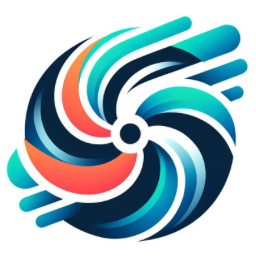In today’s fast-paced and competitive business environment, effective teamwork is crucial for achieving optimal productivity. However, managing team workflows can often be a challenge, resulting in delays, miscommunications, and decreased efficiency. This article explores strategies and practical tips on streamlining team workflows to enhance productivity. From utilizing collaboration tools to establishing clear communication channels, you will discover how to create a harmonious and efficient work environment that maximizes your team’s potential. Get ready to unlock the secrets to seamless teamwork!
Understanding Team Workflows
Team workflows play a crucial role in the success of any organization. By understanding and optimizing these workflows, you can significantly improve productivity and efficiency. The first step in streamlining team workflows is to identify the existing ones.
Identifying the existing workflows
Take some time to observe how tasks and information flow within your team. Identify the different steps involved in completing a task, from its initiation to its completion. This will help you gain a clear picture of the current workflows in place.
Highlighting the areas of improvement
Once you have identified the existing workflows, it’s important to evaluate their effectiveness. Look for redundancies, bottlenecks, and areas where tasks are prone to getting stuck. These are the areas that need improvement.
Analyzing the time and resources dedicated to each workflow
To further streamline team workflows, analyze the time and resources that are being invested in each workflow. Identify tasks that take up excessive time and effort, causing delays and impacting productivity. This analysis will help you prioritize which workflows require immediate attention and improvement.
Assigning Roles Clearly
Clear role assignments are vital for efficient teamwork. When roles and responsibilities are well-defined, team members have a clear understanding of their individual contributions and the expectations of others.
Defining individual roles and responsibilities
Start by clearly defining the roles and responsibilities of each team member. Outline the tasks they are responsible for, the skills required, and the level of autonomy they have in decision-making. This will eliminate confusion and ensure everyone knows what they are accountable for.
Ensuring everyone understands their role
Once roles are defined, it’s important to communicate and explain them to each team member. Have open discussions to address any questions or concerns and ensure that everyone has a clear understanding of the expectations placed on them.
Evaluating role effectiveness periodically
Roles and responsibilities can evolve over time. Periodically evaluate the effectiveness of each team member’s role to ensure they are still aligned with the team’s goals and objectives. Make necessary adjustments to optimize workflow efficiency.
Setting up Realistic Goals
Setting realistic goals is essential for keeping your team focused and motivated. Goals provide a sense of direction and help guide the team’s efforts toward achieving desired outcomes.
Establishing achievable targets
When setting goals, ensure they are realistic and attainable within the given timeframe. Setting overly ambitious goals can lead to stress and frustration, which can negatively impact productivity. Collaborate with your team to set targets that are challenging yet feasible.
Breaking down goals into smaller tasks
Once the goals are established, break them down into smaller, actionable tasks. This makes them more manageable and allows your team to track progress more effectively. Assign these tasks to individual team members, ensuring that each task contributes to the larger goal.
Sharing these goals with the team
Transparency is key when it comes to goal-setting. Share the team’s goals with everyone, ensuring that everyone understands how their individual tasks contribute to the overall objectives. This creates a sense of purpose and fosters a collaborative environment.
Leveraging Project Management Tools
Project management tools can significantly streamline team workflows by centralizing communication, task management, and documentation. Choosing the right tool and effectively utilizing it is crucial for success.
Choosing the right project management software
There are numerous project management software options available, each with its own features and benefits. Evaluate the needs of your team and select a tool that aligns with those needs. Consider factors such as ease of use, scalability, and integration capabilities.
Setting up and maintaining the tool
Once you have chosen a project management tool, take the time to set it up properly. Define workflows, customize notifications, and establish clear protocols for using the tool. Regularly update and maintain the tool to ensure its effectiveness.
Training team members to use the tool effectively
Provide training and support to your team members to ensure they understand how to use the project management tool effectively. This includes teaching them how to create tasks, assign deadlines, track progress, and communicate within the tool. The more proficient they become, the smoother your team’s workflows will be.
Encouraging Open Communication
Open communication is the cornerstone of effective team workflows. When team members can freely communicate, collaborate, and share ideas, it leads to improved problem-solving and increased productivity.
Promoting a culture of transparency
Encourage open and transparent communication within your team. Foster an environment where team members feel comfortable sharing their thoughts, concerns, and insights. This creates a collaborative atmosphere where ideas can be freely exchanged.
Using collaboration tools for communication
Utilize collaboration tools, such as instant messaging platforms or project management software, to facilitate communication among team members. These tools allow for real-time updates, file sharing, and threaded discussions, ensuring that everyone stays informed and connected.
Holding regular team meetings for updates, queries, and feedback
In addition to digital communication, regular team meetings are essential for effective collaboration. These meetings provide an opportunity to discuss project updates, address queries, and provide feedback. Encourage active participation and create a space for open dialogue to keep workflows streamlined.
Automating Repetitive Tasks
Automation can greatly streamline team workflows by reducing manual effort and improving efficiency. By identifying tasks that can be automated, you can free up valuable time for your team to focus on more complex and critical work.
Identifying tasks that can be automated
Evaluate your team’s workflows to identify repetitive tasks that consume a significant amount of time. Look for tasks that involve data entry, report generation, or any other repetitive actions that could be automated through software or tools.
Investing in automation tools
Once you have identified the tasks that can be automated, invest in the right automation tools or software. Research and select tools that are well-suited to your team’s needs and integrate seamlessly with your existing workflow.
Training team members on the use of these tools
To ensure successful integration of automation tools, provide training to your team members on how to use them. Offer support and guidance to help them adapt to the new processes. By empowering your team with the necessary skills, you can maximize the benefits of automation and improve overall productivity.
Providing Regular Training and Development
Investing in the training and development of your team members is crucial for their growth and the improvement of team workflows. By identifying skill gaps and organizing relevant training sessions, you can enhance the capabilities of your team.
Identifying skill gaps
Regularly assess the skills of your team members and identify any gaps or areas for improvement. This could be related to technical skills, communication skills, or any other competencies relevant to their roles.
Organizing training sessions
Based on the identified skill gaps, organize training sessions to help your team members develop and enhance their skills. These sessions can be conducted internally or through external professionals, depending on the complexity of the training needed.
Investing in professional development programs
Encourage your team members to pursue professional development opportunities, such as attending conferences, workshops, or earning certifications. Provide support and resources to help them grow both personally and professionally. The more skilled and knowledgeable your team members are, the more efficient your workflows will become.
Regular Performance Reviews
Regular performance reviews are essential for evaluating individual contributions and identifying areas for improvement. By providing constructive feedback, setting new targets, and discussing growth opportunities, you can help your team members thrive.
Carrying out performance evaluations
Schedule regular performance evaluations to assess the performance of each team member. During these evaluations, provide feedback on their strengths, areas for improvement, and overall contributions to the team.
Providing constructive feedback
When providing feedback, ensure it is constructive and focused on growth. Highlight areas where team members have excelled and offer suggestions for improvement. This helps them understand where they stand and what steps they can take to enhance their performance.
Setting new targets and discussing areas of improvement
After evaluating performance, set new targets and goals for each team member. Collaborate with them to create action plans that address their areas of improvement. Regularly discuss progress and provide support along the way.
Promoting a Work-Life Balance
A healthy work-life balance is crucial for the well-being and productivity of your team members. By understanding the importance of downtime, avoiding burnout, and fostering a culture of respect for personal time, you can create a harmonious work environment.
Understanding the importance of downtime
Recognize that downtime is crucial for your team members to recharge and rejuvenate. Encourage breaks throughout the workday, promote a healthy work culture, and discourage overworking. By prioritizing downtime, you ensure that your team remains energized and motivated.
Avoiding burnout with flexible schedules
Consider implementing flexible work schedules that allow your team members to balance their personal and professional lives. This could include options for remote work, flexible hours, or personalized leave policies. By accommodating individual needs, you create an environment that supports overall well-being.
Fostering a culture of respect for personal time
Respect for personal time is essential for maintaining work-life balance. Encourage your team members to set boundaries and avoid work-related communication outside of designated working hours. This fosters a culture where personal time is valued and promotes a healthy work-life balance.
Acknowledging and Rewarding Efficiency
Recognizing and rewarding team members’ efforts and increased productivity is a powerful way to boost morale and motivation. By creating an atmosphere of appreciation and motivation, you can further streamline team workflows.
Recognizing the efforts of team members
Regularly acknowledge and recognize the efforts of your team members. This can be through simple gestures such as verbal appreciation or more formal recognition programs. Celebrate accomplishments and highlight the positive impact their contributions have made.
Rewarding improved productivity
Create incentives or reward systems that encourage improved productivity. This could be through bonuses, promotions, or additional paid time off. By recognizing and rewarding increased efficiency, you encourage continuous improvement within the team.
Creating an atmosphere of appreciation and motivation
Above all, create an atmosphere where team members feel appreciated and motivated. Foster a positive work environment where their contributions are valued. Encourage collaboration, teamwork, and support for one another. By nurturing a positive atmosphere, you foster a mindset of striving for excellence in team workflow.





